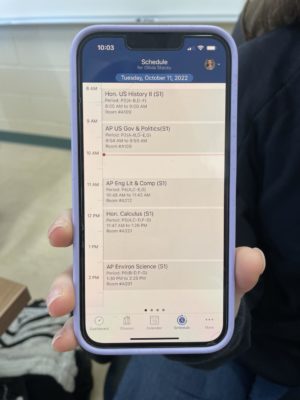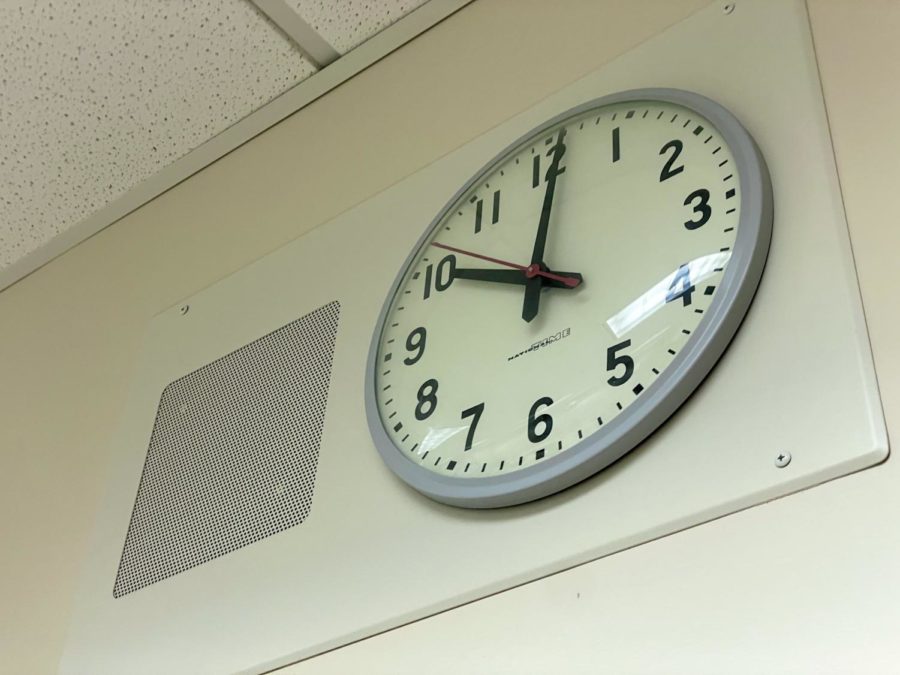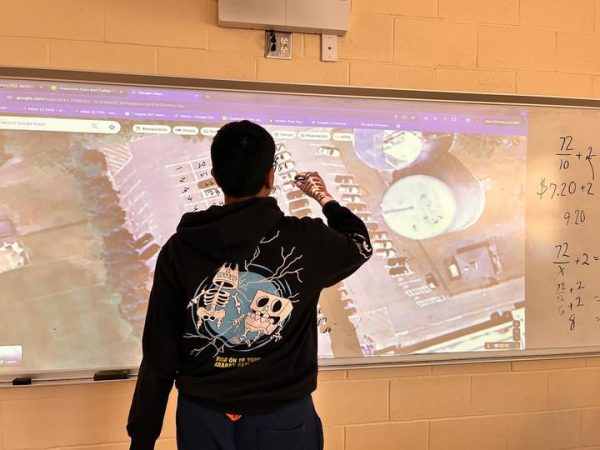Why You Have Less Time to Get to Your Classes
The clock ticks down as Tuesday’s Flex Block begins at its new time 10:01. Flex Block was new in the 2021-2022 school year and used to begin at 9:55 and end at 10:40.
Administration didn’t decide to cut passing periods to four minutes just for fun, they were cut for the 2022-2023 school year in order to comply with state mandates.
Principal Evan Bishop explained the reason for the shorter passing periods and the resulting school-wide schedule change.
“It’s really around what they call ‘time on learning,’ so you need to have a certain amount of hours in the school year that is dedicated to actual school time. So we are still at that point, but we wanted to make sure we created some opportunities to be a little bit above that,” Bishop said.
This “time on learning” mandate comes directly from the state. According to the Massachusetts Department of Elementary and Secondary Education, as of May 5, 2021, all schools shall ensure that every secondary school student is scheduled to receive a minimum of 990 hours per school year of structured learning time.

(Photo by Emma DiNicola)
Brian Prescott, history teacher and member of last school year’s scheduling committee, explained how the implemented changes met up with state standards without adding extra time to the school day.
“Instead of adding five minutes to the end of the school day, they said they were going to find and squeeze five extra minutes from within the school day. They’re going to add five minutes at the end of the school day next year,” Prescott said.
According to the Massachusetts Department of Elementary and Secondary Education, time that a student spends at school breakfast and lunch, passing between classes, in homeroom, at recess, in non-directed study periods, receiving school services, and participating in optional school programs shall not count toward meeting the minimum structured learning time.
Since passing periods don’t count toward structured learning time, they were the first thing to get cut.
“We’re adding five minutes back into our schedule this year just with going from five to four minutes passing time,” Bishop said.
Although the mandate came from the state, many high school staff played a significant role in orchestrating this schedule change.
“The four-minute passing time was developed in connection with the central office, which is the superintendent, the high school administration, and the teacher’s union,” Bishop said.
These changes primarily impacted students as they have six passing periods each day, including passing to and from lunch. Many students have strong opinions on their new reduced passing period times, including senior class president, Shelby Jones.
“I feel like it’s not enough time to get to your class, depending on where you are in the building. Sometimes I’ll have something like wellness, then I have to get all the way to English, which is on the third floor opposite side, and I come in late, and I didn’t even waste any time,” Jones said.

(Photo by Emma DiNicola)










